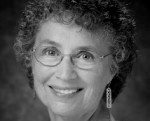By Sondra Shapiro
As movie legend Bette Davis said, “Old age is no place for sissies.” Those of us navigating this path are all too familiar with the losses and financial and health challenges that confront us with each day.
The town or city in which we live can make it easy to age in place by providing access to health facilities and care, a council on aging and senior center, well-lit streets and maintained sidewalks. Without these conveniences, where we live can adversely affect wellbeing.
With the tsunami of 78 million graying baby boomers, communities across the nation are in crisis-management mode trying to develop and fund programs and services. According to a new study — the Healthy Aging Data Report: Community Profiles by the Geron-tology Institute of the John W. McCormack Graduate School of Policy and Global Studies at the University of Massachusetts Boston — as of 2010, the Massachusetts 65 and over population represented 14 percent of the population. That number is predicted to swell to 21 percent by 2030. The national average of those 65 and older is 13.7 percent. Today 59 percent of individuals age 65 or older in the Bay State are female, 50 percent are married and 32 percent live alone.
The state is finding itself up against the fence to meet the challenges of the aging population. A jump-off point is the recent study, which included community profiles for all 351 cities and towns in Massachusetts as well as the 16 neighborhoods of Boston. The study grouped the communities into six geographic regions — Western, Central, Northeast, Metro West, Boston and Southeast.
The results will be used to spur dialogue and hopefully action.
Key findings from the Massachusetts Healthy Aging Report include:
 •Chronic disease is high among older adults with the state average for those with four or more chronic conditions at 59 percent.
•Chronic disease is high among older adults with the state average for those with four or more chronic conditions at 59 percent.
•Rates of depression, hypertension and Alzheimer’s disease or related dementias among older adults are higher than the national averages shown in Centers for Medicare & Medicaid Services data.
•Based on Medicare claims since 1999, 32 percent of older adults have been diagnosed with diabetes.
•At 15 percent, the prevalence of prostate cancer among men is higher than the rates for all other cancers included in the report, regardless of gender.
•Twenty-three percent of adults age 60 and older are considered obese (Body Mass Index of 30 or higher). Only a quarter of older adults eat the recommended five servings daily of fruits and vegetables.
•About two out of three adults age 60 or older are getting annual flu shots and have taken the pneumonia vaccine; 15 percent are receiving the shingles vaccine.
When it comes to people over age 85, the typical profile is likely to be female, to live alone, to be very frail and to have limited financial resources.
The report — commissioned by the Tufts Health Plan Foundation — showed that health wise, some cities and towns are great places to age, while other areas are just the opposite.
Affluent communities that tend to have good access to medical services often reported healthier elders, while some urban and rural towns had sicker people.
For example, six urban communities — New Bedford, Springfield, Fall River, Worcester, Lowell and South Boston — scored below state averages for healthful aging, while Carlisle, Wellesley, Harvard, Brookline and Stow scored the highest.
The Boston region comprises a diversity of wealthy and poorer towns and neighborhoods that include East Boston, Charlestown, Central Boston, Back Bay, South End, Fenway Kenmore, Allston Brighton, Jamaica Plain, Roxbury, North Dorchester, South Dorchester, Mattapan, Roslindale, West Roxbury, Hyde Park and Brookline. As such, the quality of healthy aging varied greatly.
For example, “Brookline has better than state average rates on 20 out of nearly 100 healthy aging indicators. Some Boston neighborhoods like the South End and Mattapan have mixed patterns on indicators in comparison to state averages. At the other extreme, South Boston is worse than the state averages on 16 out of nearly 100 indicators,” the authors wrote.
With the exception of Springfield and some smaller cities, most communities in the Western region of the state are sparsely populated, rural settings. This area has the lowest rates of chronic disease. Yet, Springfield has among the highest rates of older adults reporting “fair or poor health, physically unhealthy days and disability.”
Worcester has the highest rates of disability, age-adjusted mortality, depression, chronic disease and tooth loss. It also has the highest rate in the state of falls severe enough to cause injury.
In the Metro West region, which on average is higher income, older residents are healthier. In addition to lower prevalence rates for many chronic conditions, they are doing better than the state averages in terms of emotional support, eating recommended daily servings of fruits and vegetables and not smoking. However, cases of osteoporosis, hip fracture, Alzheimer’s disease and related dementias rates exceed the state average.
The Northeast region includes older industrial cities and sparsely populated coastal towns with differing population health. Coastal communities, such as Gloucester, Manchester-by-the-Sea and Rockport, have better-than-average rates on several chronic disease and health behavior indicators, while the social and financial challenges Lowell and Lawrence face contribute to poorer health. Lowell has the highest percentage in the state of older adults reporting fair or poor health and more physically unhealthy days.
The Southeast also has a mix of older industrial towns and coastal communities. And so, like its Northeast counterpart, it faces contrasting healthy aging challenges. Towns such as New Bedford and Fall River exceed state averages for multiple chronic conditions, while Cape Cod towns report “good/very good or excellent health, have relatively low rates of disability, higher rates of life satisfaction, and higher rates of physical activity.”
The numbers tell the facts: The state is a patchwork of successful and unsuccessful aging. Good intension was certainly the motivation for the launch of this project. Moreover, good intension may be at the heart of how this information will be used.
The state has known and talked about aging-in-place supports for years. And it shouldn’t be surprising to anyone that the aging baby boomers were going to further burden health-care delivery, programs and services that help elders age in place.
The fact that we are still at the talking and planning stage is discouraging. The question is, how much money will solutions take? And are state and community governments willing and able to fund initiatives?
Sondra Shapiro is the executive editor of the Fifty Plus Advocate. Email her at sshapiro@fiftyplusadvocate.com. And follow her online at www.facebook.com/fiftyplusadvocate, www.twitter.com/shapiro50plus or www.fiftyplusadvocate.com.








